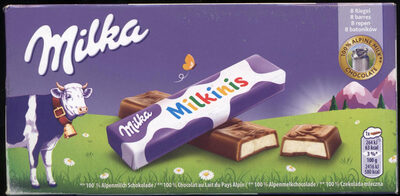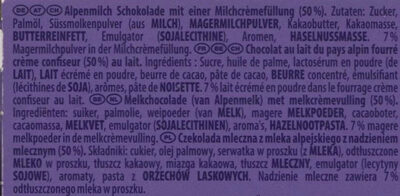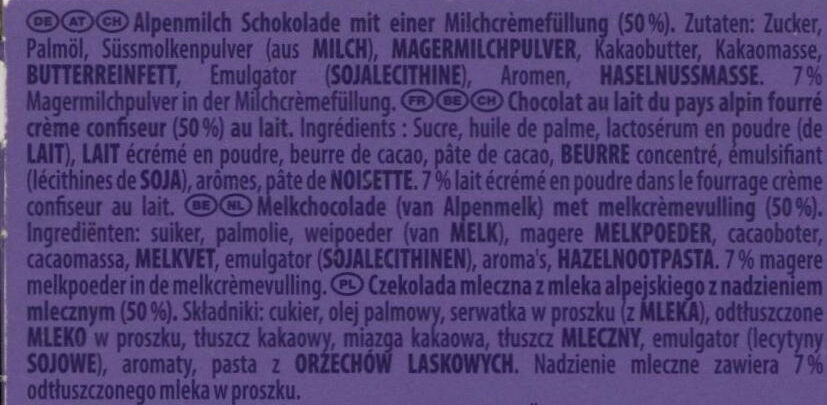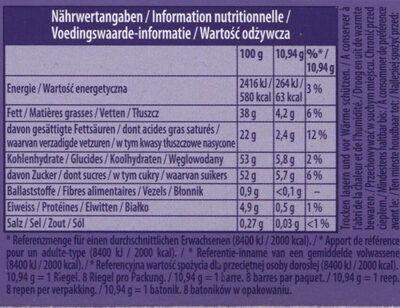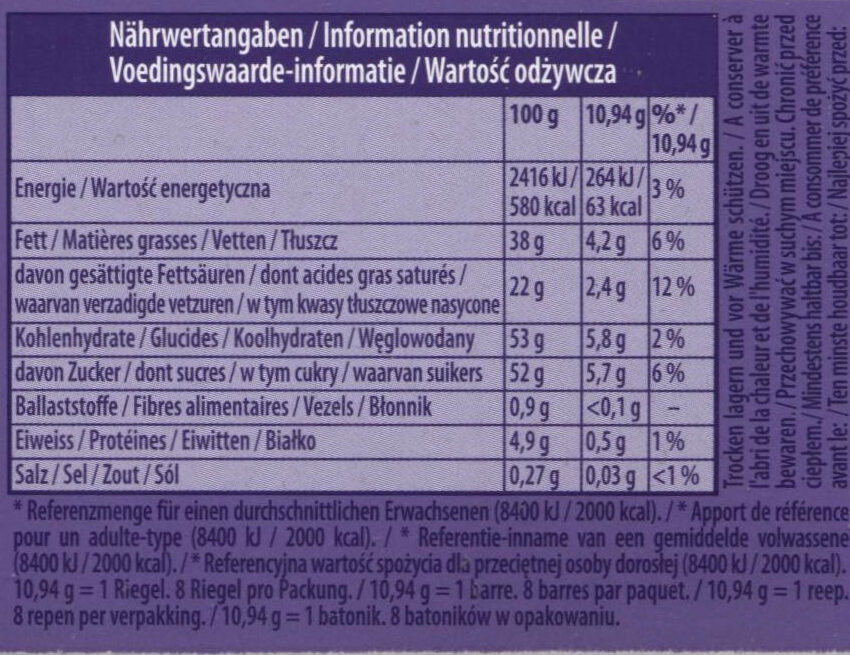Milka - Milkinis - 87.5 g (8 x 10.94 g)
Barcode: 7622200003938 (EAN / EAN-13)
Common name: Chocolat au lait du pays Alpin fourré confiseur (50%) au lait
Quantity: 87.5 g (8 x 10.94 g)
Packaging: Metal, Recyclable Metals, Aluminium, Cardboard, Light aluminium, Non-corrugated cardboard, Sheet
Categories: Snacks, Sweet snacks, Cocoa and its products, Confectioneries, Frozen foods, Bars, Chocolate candies, Cereal bars, Chocolates, Milk chocolates, Bars-covered-with-chocolate, Chocolate cereal bars, Chocolate confectionery with dairy filling
Labels, certifications, awards:
Triman
Origin of ingredients: Unspecified
Manufacturing or processing places: Union européenne
Stores: Carrefour Market, Edeka, Géant, Leclerc, Carrefour
Matching with your preferences
Report a problem
Data sources
Product added on by tacite
Last edit of product page on by foodvisor.
Product page also edited by anticultist, boism, bugmenot, date-limite-app, ecoscore-impact-estimator, inf, insectproductadd, kiliweb, moon-rabbit, omerfedj, openfoodfacts-contributors, packbot, prepperapp, quechoisir, sebleouf, spotter, twoflower, yuka.sY2b0xO6T85zoF3NwEKvlmtLVeSHhhyZFUbmiECBl_axLrDRa8NWuJbIbKs.
